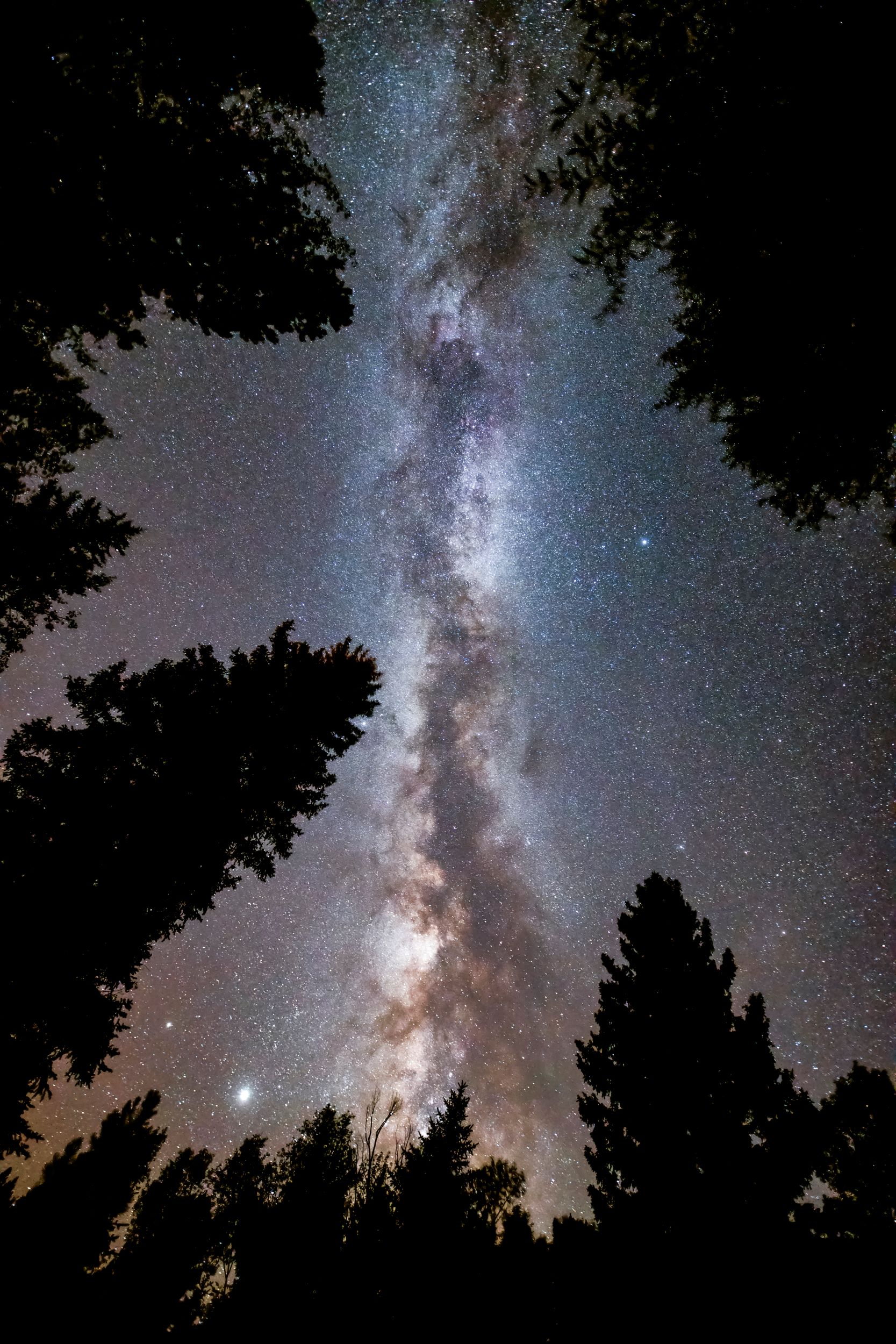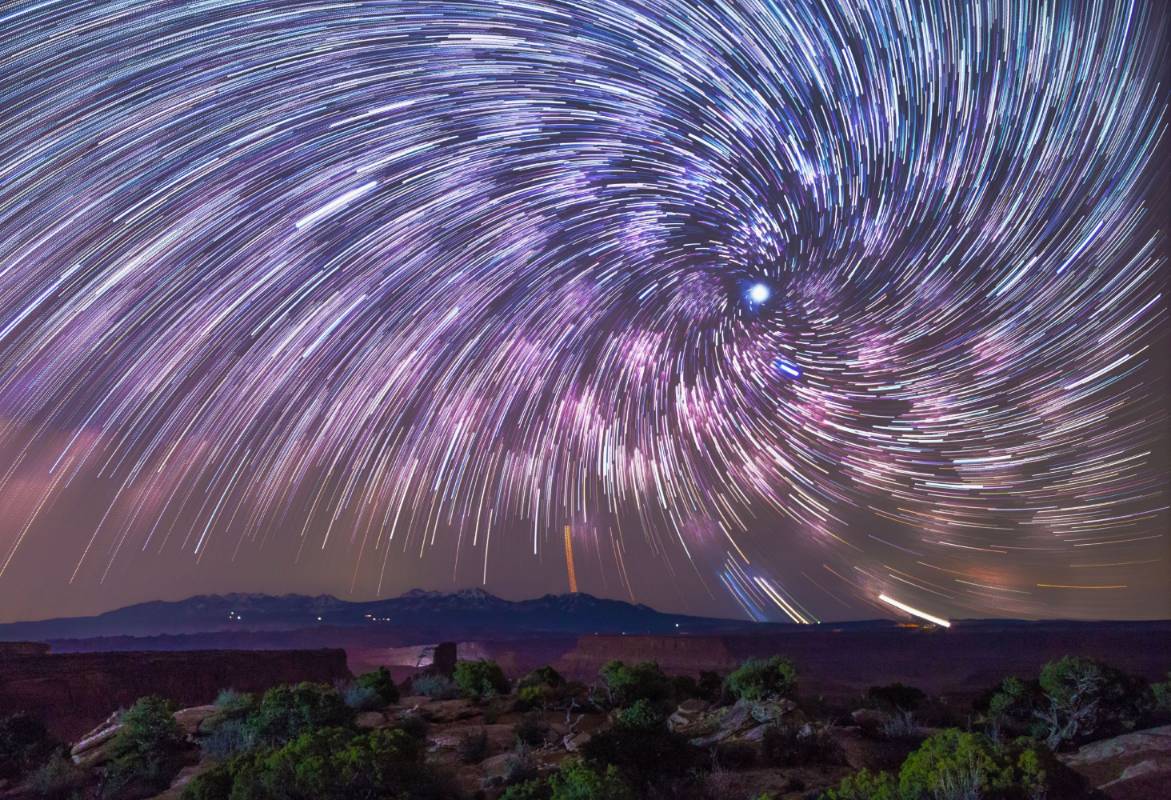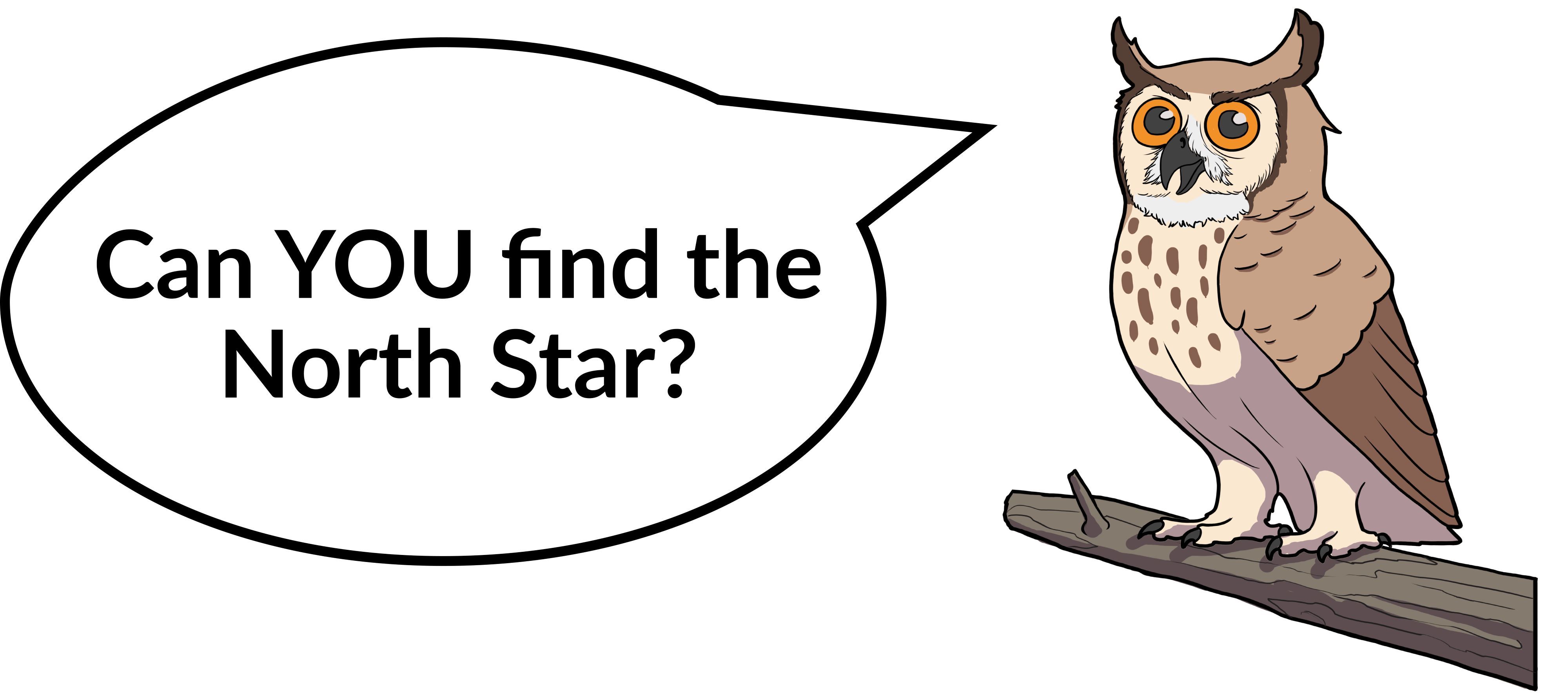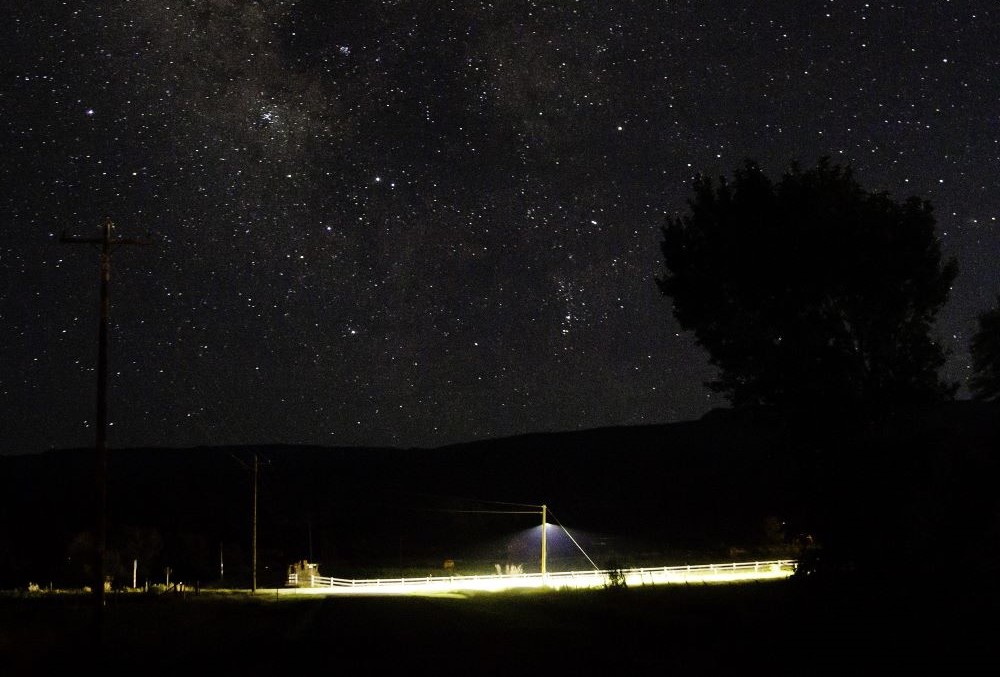Dark Sky Activities To Do At Home

Fuller Barn, Eden, Utah Photo Credit: Janet Muir
Have You Ever Wondered?
Why do stars twinkle, but planets don’t?
Does the North Star ever move?
What's the closest star to Earth?
How many stars make up the Milky Way galaxy?

Milky Way over Boulder Mountain, Dixie National Forest
Photo Credit: Ryan Andreasen
Finding the North Star
The North Star, also known as “Polaris,” and several well-known constellations can be seen year-round. The Big Dipper, the Little Dipper, and Cassiopeia are all “circumpolar constellations,” meaning they never set below the horizon and appear to move around the North Star. As the Earth rotates on its axis from west to east, these constellations appear to move counterclockwise (or backwards) from the real rotation of the earth.
To find the North Star, locate the Big Dipper, then imagine a straight line passing through the two stars of the pan furthest from the handle. Using the width of those two stars, continue that line for another 5 equal spaces until you reach Polaris!

Finding the North Star, or "Polaris," is easy with the help of the Big Dipper. The Big Dipper, the Little Dipper, and Cassiopeia are all circumpolar constellations that rotate around Polaris.

The North Star with circling star trails looking north
La Sal Mountains, Moab, Utah
Photo Credit: Bettymaya Foott

Why Should We Care about Dark Night Skies?

Stars over a new "night-friendly" street lamp
5 Reasons Dark Skies are Important:
-
Saves energy
-
Supports human health
-
Supports ecosystems and wildlife that depend on dark skies
-
Well designed outdoor lighting can improve public safety
-
Stargazing is an activity people of all ages can enjoy
Learn more about Light Pollution
-
Losing the Dark (a video produced by DarkSky International and Loch Ness Productions)
-
Lost in Light (night skies across the Bortle Scale)
What can YOU do to protect Dark Skies?

Milky Way over the Dixie National Forest
Photo Credit: Ryan Andreasen
Credits:
Funding for the Dark Sky Passport Program: USU Extension, Institute of Outdoor Recreation and Tourism
Program Partners: National Park Service, DarkSky International, Utah State Parks, Utah Office of Tourism, Utah Division of Outdoor Recreation, Basin and Range Dark Sky Cooperative
Scientific Illustrator: Rob Soto (www.rob-soto.com/)
Photographers: Janet Muir, Ryan Andreasen, Bettymaya Foott
Linked Resources: Night Sky Network (Jet Propulsion Laboratory), STEMatHome.org, In-The-Sky.org, AlexanderTutoring.com, GlobeAtNight.org, Western Firefly Project (Natural History Museum of Utah), NASA Science Space Place, Earthsky.org, Frontiers for Young Minds, McDonald Observatory (the University of Texas at Austin), eSky: The Electronic Sky

